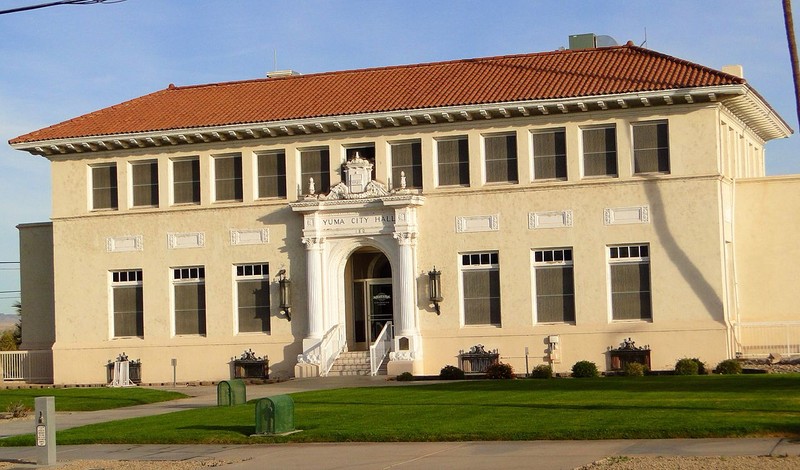Yuma City Hall
Introduction
Text-to-speech Audio
Images
The former Yuma City Hall was built in 1921 and is an fine example of Spanish Colonial Revival architecture.

Backstory and Context
Text-to-speech Audio
The former Yuma City Hall building was erected in 1921 and the site for it—it overlooks the Colorado River—was chosen to give it added importance. It was designed by the architecture firm Lyman and Place, which was well-known for its use of southwestern architecture in the buildings it designed. The building is listed on the National Register of Historic Places in 1982. The Yuma Crossing National Heritage Area encompasses an area along the Colorado River consisting of two state parks, the site of the Yuma Crossing (essentially where the interstate bridge now crosses the river), two riverfront parks, trails, and wetlands. The crossing site is a National Historic Landmark. During the 1800s it was a major crossing point between Alta California and New Spain and then California and the American southwest.
Sources
"Yuma City Hall." Arizona State Historic Property Inventory. April 21, 1980. https://npgallery.nps.gov/NRHP/GetAsset/NRHP/82001660_text.
"Yuma City Hall." The Historical Marker Database. Accessed September 11, 2020. https://www.hmdb.org/m.asp?m=28985.
Wikimedia Commons: https://commons.wikimedia.org/wiki/File:Old_Yuma_City_Hall.jpg
